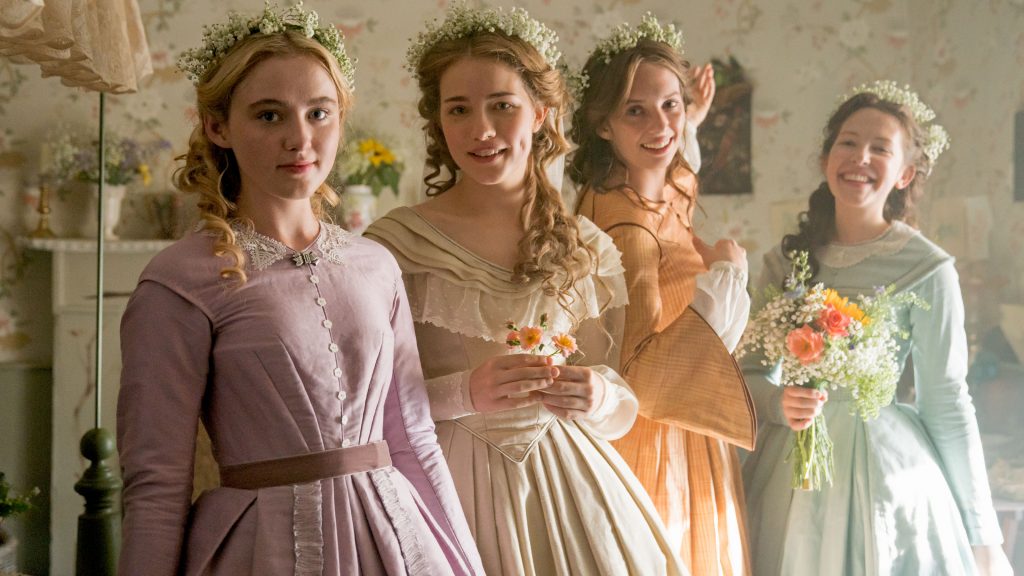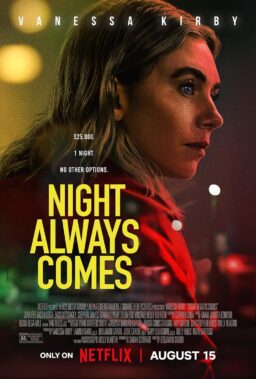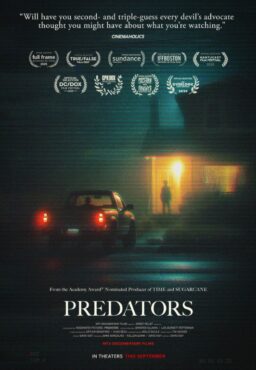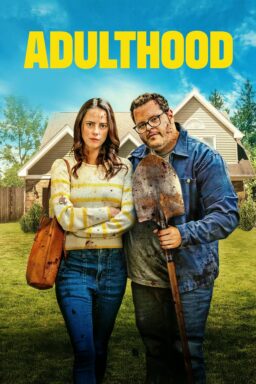Two inspiring women caused a stir at the recent two-day PBS Press Tour in Pasadena, CA. The diversity-rich PBS winter-spring schedule promises “Little Women,” great men and women, nostalgic remembrances and people who reached for impossible dreams.
To see those two women, Dolores Huerta and Angela Lansbury, you’ll have to wait until spring. The New Mexico-born Huerta remains an activist even at 87. She commemorated Martin Luther King Day by marching. Last year’s documentary on her, “Dolores,” was featured in a nine-day (Jan. 13-21) activist festival in downtown Los Angeles and will come to PBS on March 27.
Series executive producer, Lois Vossen said it’s time for a “new generation to know who Dolores is.” After all, the FBI knew how dangerous she was and she originated the phrase, “sí se puede.” Vossen noted, “We’re knee deep in sexism when it comes to why people don’t know her.
Huerta admitted that growing up in the fifties and sixties, “people just assumed that men had to take the leading role,” so when César Chávez (1927-1993), co-founder with Huerta of the National Farm Workers Association, asked to become the spokesman, “I said, ‘Well, of course.'”
Huerta commented that “People are afraid their voices don’t count, that they can’t make a difference” and she remains active to help empower people. “Everyone has personal problems. Once one gets engaged in helping other people, your personal problems are diminished.”
Producer, writer and director Peter Bratt noted that PBS is the perfect venue because Huerta always fought for equal access and, as his brother, consulting producer Benjamin Bratt noted, “to get eyes on the screen is the number one objective.”
Growing up, Benjamin, his brother Peter and mother were well aware of Huerta because they too were activists and had participated in the 1969 Native American Occupation of Alcatraz, something Huerta supported.
Lansbury, 92, was part of the second panel on Masterpiece’s “Little Women.” The first panel featured the executive producers Colin Callender and Rebecca Eaton and screenwriter/executive producer Heidi Thomas (“Call the Midwife”) while the second panel brought in the actors who played three of the four March sisters–Annes Elwy (Beth), Willa Fitzgerald (Meg), Maya Hawke (Jo), Emily Watson (Marmee), Jonah Hauer-King (Theodore “Laurie” Laurence) and Lansbury (Aunt March). You probably haven’t heard of most of the actors, but that’s intentional. Callender explained that in creating a convincing March family they purposely looked for “actors starting out in their careers” so that the audience would be “seeing them as the characters rather than some young starlet.”
This two-part adaptation of Louisa May Alcott’s classic novel, “Little Women,” is supposed to take place in Massachusetts but was filmed in the late summer and early autumn in Ireland.
Because Lansbury was raised in England, she hadn’t read the book, and admitted that initially she found Aunt March “very one-sided, but I discovered over the course of the scenes that she has a heart that was beating.” She added, “I found it a very fascinating role to play and was glad that I had the opportunity at my age.” While Lansbury said the biggest life lesson from the series was the importance of family. On advice to young actors, Lansbury commented, “Learn everything you possibly can about your character…really know who you are playing and don’t just go out there and spout words. It’s a heck of a difference.”
“Little Women” premieres May 13.
You don’t have to wait until spring to be inspired by other PBS programs. In the 1930s, a black family having a home in the Washington Park seemed like an impossible dream and it took a 1940 Supreme Court decision and years of harassment for Hansberry’s family to claim their home in the Woodlawn neighborhood. Lorraine Hansberry was the youngest of four children in that family, and those experiences became the basis for her 1959 “A Raisin in the Sun,” the first play by an African American woman on Broadway. Her writing and her activism didn’t stop there. She was mentioned in last year’s lyrical James Baldwin documentary, “I Am Not Your Negro,” but on Friday, Jan. 19, American Masters presents a 2-hour documentary: “Lorraine Hansberry: Sighted Eyes/Feeling Heart.”
The title comes from a quote: “One cannot live with sighted eyes and feeling heart and not know or react to the miseries that afflict this world.” The documentary features Tony Award-winning Anika Noni Rose as the voice of Lorraine Hansberry and interviews with Sidney Poitier, Ruby Dee, Harry Belafonte and Louis Gossett, Jr. “Lorraine Hansberry: Sighted Eyes/Feeling Heart” is part of American Masters’ year-long Inspiring Women campaign.

Hedy Lamarr was the inspiration behind Snow White and Catwoman, but her real claim to fame should be her technological legacy. Director Alexandra Dean noted, “Hedy never made a ‘Casablanca.’ She never made a film that was iconic in its own right.”
While there have been some detractors there, UCLA associated professor of electrical engineering Danijela Cabric believes that Lamarr was the first person who suggested frequency hopping. Cabrick also noted that its only recently with the widespread usage of wifi and Bluetooth, that your average person could understand its importance although “federal agencies are still investing in frequency hopping technologies.”
“Bombshell: The Hedy Lamarr Story” already had a brief theatrical release and premieres on American Masters on May 18.
Stereotype breaking has a long history. As part of Black History Month, Independent Lens presents the second of Stanley Nelson’s America Revisited trilogy on February 19: “Tell Them We Are Rising: The Story of Black Colleges and Universities.” Historically black colleges and universities (HBCUs) began before the American Civil War with Cheyney University of Pennsylvania (1837) and Lincoln University, Pennsylvania (1854) but most were established in the South after that war ended. Notable alumni include Martin Luther King Jr., NASA mathematician Katherine Johnson, novelist Toni Morrison, director Spike Lee and Oprah Winfrey and about 100 continue to exist.
Director Nelson said this is “largely a historical film,” the documentary also is about “how black colleges and black college students changed America” via social movements. Michael Lomax, president of The United Negro College Fund noted, “the roots of the Civil Rights Movement is in these institutes” and this year four new black mayors were graduates of HBCUs.
Nelson’s first installment was the 2016 “Black Panthers: Vanguard of the Revolution” and the trilogy will end with “The Slave Trade: Creating a New World.”
For those who need some comfort in these tumultuous times, PBS celebrates the 50th anniversary of the first broadcast of the PBS children’s series “Mister Rogers’ Neighborhood” (February 19, 1968) with the documentary “Mister Rogers: It’s You I Like.” Narrated by a former member of Rogers’ crew, Michael Keaton, this documentary is a fond look at Rogers through the eyes of those who knew him best like his widow, Joanne Rogers, the people who worked with him (David Newell as Mr. McFeely, the Speedy Delivery Man) and celebrities who, according to producer JoAnn Young, “let it be known that Mr. Rogers has influenced their work” and that includes Sarah Silverman.
Newell noted, “He would show children places and topics and let them catch it” because attitudes are caught and not taught.” Fred Rogers (1928-2003) also believed in the “importance of play in children’s lives” and the “most important thing was to listen.”
One of the kids who appeared on the show, Nicholas Ma, appeared at six and sixteen with his famous father, Yo-Yo Ma. Nicholas Ma remembered how special it was to be there with two of his heroes and said that the important thing Rogers taught him was “kindness and courage are linked.” Rogers saw “vulnerability as a source of strength.”
“Mister Rogers: It’s You I Like” premieres March 6.

Looking back and then looking forward, PBS updates its 1969 “Civilization” with a nine-episode special that broadens the concept of renaissance and human achievement and cross-cultural communication with its “Civilizations.”
The original series was written and presented by Kenneth Clark, an art historian. The series was a survey of Western art, architecture and philosophy, focusing on Europe and the achievements of white men. “Civilizations” is, according to founder and CEO of television production company Nutopia Jane Root, “an enormous broadening of the canvas.” But instead of being critical of the Clark original series, this is a “rethinking, reinterpreting in a joyful way.”
British-Nigerian historian and writer David Olusoga noted that the renaissance is seen as “a Mediterranean phenomena.” The series looks at how the ideas and art of the Ottoman empire moved into Italy. It is “seeing the world more interconnectively.”
The nine episodes are: “The Second Moment of Creation” (April 17), “How Do We Look?” (April 24), “God and Art” (May 1), “Encounters” (May 8), and “Renaissances” (May 15).
“Civilizations” premieres April 17.
Last year, NOVA covered “Eclipse Over America” and this year, NOVA again looks to the sun for scientific surprises in its two-hour special: “The Impossible Flight.” In 2015, the Solar Impulse II, set out from Abu Dhabi on a grand adventure: the first solar-powered flight around the world. Pilots Bertrand Piccard and André Borschberg wanted to send a message to the world: Renewable energy has potential yet to be realized.
“The Impossible Flight” shines a bright light on the possibilities of solar energy and premieres January 31.
NOVA also shows us that there are great finds still yet to be discovered. One teenage girl’s bad luck thousands of years later became a team of divers’ good luck. Alberto Nava was diving in the waters of a Hoyo Negro cave and swam into a forest of prehistoric bones. Among the saber-toothed cats, the giant sloth and gomphothere bones, was the nearly complete skeleton of a girl. Estimated to be between 15-16, Naia, named for the ancient Greek water nymphs, fell into the 100-foot pit in Mexico’s Yucutan and died 13,000 years ago. Her bones are some of the earliest known human remains in the Americas, and she is the “First Face of America.”
“First Face of America” premieres February 7.
American Experience looks at another first. As part of Asian Pacific American Heritage Month, a documentary looks at the first time the United States federal legislation singled out a race and nationality for exclusion from the American dream in the two-hour “The Chinese Exclusion Act.” The act was signed into law by President Chester A. Arthur on May 6, 1882. It took six decades and a world war to repeal.
The makers feel this is not just an immigration story, but the immigration story because the act was important in the formation of American policy and American identity and was the first of a series of laws limiting immigrations from areas that threatened a white European based society.
While co-director Li-Shin Yu said, “I think in the Chinese American community it is known, but not to the extent it should,” co-director Ric Burns noted that what is “most chilling” is that “it had to be deliberated and signed every decade.”
“The Chinese Exclusion Act,” a special presentation, premieres May 29.
Animal lovers and camera aficionados collide again with the Nature miniseries: “Animals with Cameras.” In this three-part series, cameras are attached to the animals studied for surprising and intimate insight into their lives. The first (January 31) episode focuses on orphaned chimpanzees in Cameroon, Kalahari meercats and Magellanic penguins. The second (February 7) has cheetahs in Namibia, fur seals off Australia and chacma baboons in South Africa. The last (February 14) looks at brown bears in Turkey, Chilean devil rays and guardian sheepdogs in Southern France. While the cameras are less spectacular than the animatronics used by “Spy in the Wild” series, the insights are just as amazing, including some that surprised the scientists that wildlife photographer Gordon Buchanan teamed with.
According to BBC producer Dan Rees, with the guidance of scientists, the team was trying to answer some basic questions. They did encounter problems with lost cameras and camera-jealousy. If you give a large group of chimps six cameras, Buchanan explained, “then they all want cameras. We had to give all of the rest dummy cameras.”
Science geeks, old and young, might also want to watch POV: “Bill Nye: Science Guy.” Nye isn’t a scientist, he’s a science educator. First he focused on children with his “Bill Nye: The Science Guy” and he currently has a Netflix series “Bill Nye Saves the World,” a science-focused talk show for adults. The movie premiered at the South by Southwest Film Festival last year and airs on PBS April 18.
For those who feared that the end of the “Downton Abbey” era would destroy the good fortunes of the PBS-BBC collaboration, don’t despair. The series that took the “Downton Abbey” time spot, “Victoria” (Sunday, 9 p.m.) is doing well by the numbers and the popular Benedict Cumberbatch is back. The second season of “Victoria” had already opened on PBS before the winter showcase and the numbers were solid.
Cumberbatch is not, however, returning to PBS with a new modern day Sherlock Holmes story. Instead, the first full-length film by his SunnyMarch production company (with Pinewood Television), “The Child in Time,” will premiere on Masterpiece April 1. Based on a 1987 Ian McEwan novel of the same name, the movie is about a father Stephen (Cumberbatch) who two years earlier had taken his three-year-old daughter Kate to the supermarket and then she disappeared. Kelly Macdonald plays his estranged wife, Julie.
Cumberbatch explained, “I read the book a long time before I was a father and the script, after I was a father.” The story has taken out much of the political rhetoric and focuses on “what it is to lose a child” and “how to care in a partnership.” The movie “played to the poetic nature of the relationship” and shows how it is “moved and shaped by this tragedy and how it is maintained by love.”
Check local listings for air dates. The programs should also be available to stream online after they air.












